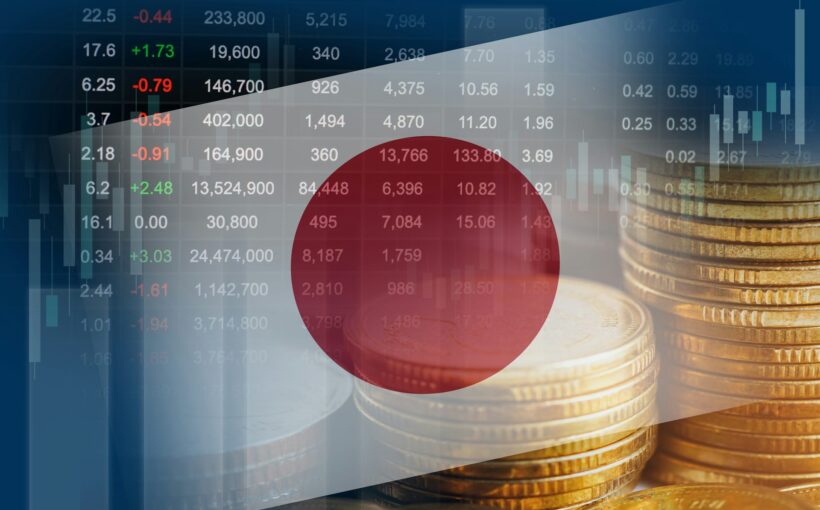
The Bank of Japan (BoJ) raised interest rates for the first time in 17 years on March 19, bringing an era of negative interest rates to an end. The key rate was hiked from –0.1% to a band from zero to 0.1% – a token effort to offer some tightening after decades of loose but unsuccessful monetary policy.
Despite the adjustment, Japan remains the major economy with the lowest interest rates in the world. In my opinion, the move is not designed to end Japan’s monetary policy dilemma; instead, it confirms the central bank’s role in supporting the US dollar.
Negative rates were ostensibly adopted to stimulate the economy, based on the idea that lower interest rates lead to higher growth. But the negative rates were never a stimulus to the economy.
They served as a tax on the reserves held by commercial banks at the central bank. Under negative rates, banks had to pay the central bank, squeezing their profit margins as soon as the rates were imposed (in 2016 in Japan).
Since banks in Japan never extended negative rates to deposits made by bank customers, they passed this penalty onto borrowers. This was relatively easy to do as small Japanese firms have been desperate for more bank loans for 30 years. As a result, lowering rates into negative territory actually raised borrowing rates for loan customers.
Due to the squeeze on bank profits, the years of zero and negative rates (the BoJ had already reduced interest rates to 0.001% in the 1990s) have also forced thousands of small banks in Japan (likewise in Europe) to merge with bigger banks.
Central planners love the idea of a concentrated banking system with a few big banks. But it is small firms and the middle class that get crushed. Research has found that bigger banks lend less to small firms, thus economies are most vibrant when they boast many small banks.
Bank lending provides the fuel for economic growth. So the BoJ’s low and negative interest rate policies have harmed the Japanese economy by suppressing bank credit growth for decades.
The yen remains weak
Is the small rise in interest rates a step in the right direction? Barely. Zero rates are still bad for the economy. Rates should have been raised much more and much earlier. But the BoJ is not interested in supporting the domestic economy and national interests, nor even explicit government policy. Consider the exchange rate.
It is often thought that the low rates have contributed to a weak yen, since investors could earn higher interest by investing in other currencies. But the yen has fallen in value since the rate rise was announced. Before interest rates were raised, the yen stood at ¥149 to the US dollar. One week later, it had slipped to ¥151 to the dollar. And on April 15, the yen fell past ¥154 per dollar – its weakest in 34 years.
Forecasters have predicted that the yen would bounce back given the prowess of Japanese manufacturing. They are also aware of the hawkish rhetoric of the Japanese Ministry of Finance, which is legally in charge of official currency intervention and deploys this to stop yen weakness.
However, the BoJ is independent and has a long history of sabotaging the plans of the Ministry of Finance. The BoJ usually sterilises any intervention ordered by the Finance Ministry to pursue the opposite goal. It has, for instance, aimed to prolong the recession in order to force through structural change.
The sterilisation is why the yen has weakened further since the recent policy announcement, and so far there is no change in sight.
The BoJ has been expanding credit creation faster than the US Federal Reserve. Faster money printing in Japan will weaken the value of the yen against the US dollar. These factors are more important than interest rates, which tend to simply follow the economy.
Propping up the dollar
The US dollar had been threatened by the Fed’s extraordinary monetary policy of March 2020, when it implemented the Blackrock plan. This was the plan proposed by American asset management firm Blackrock in 2019 to create inflation via a version of quantitative easing.
This plan was actually based on a proposal of “quantitative easing” that I had developed in Japan 30 years ago to help the country stage a swift recovery from its incipient banking crisis. It was a policy designed for deflationary economies with shrinking bank credit, namely for the central bank to purchase assets from the non-bank sector.
However, bank credit growth in 2020 was already more than 5% in the US when the Fed added fuel to the fire and doubled bank credit growth to 11%. That’s why I had been forecasting in 2020 that we would see significant inflation 18 months later, which is what happened in those countries that followed the Fed’s money printing.
Since then, the BoJ has been given the job of propping up the US dollar. In an era when the Brics countries (Brazil, Russia, India, China and South Africa) are challenging the dominance of the dollar and even Saudi Arabia is selling oil against the Chinese currency, the US has enlisted its allies to support the dollar.
The BoJ continues to expand credit creation faster than the Fed, and while that happens, the yen will stay weak no matter what the Ministry of Finance says or does. As Henry Kissinger said in 1972 with reference to South Vietnam: “It is bad to be America’s enemy. It’s fatal to be its ally.”
![]()
Richard Werner is affiliated with Local First Community Interest Company advocating the establishment of local banks in the UK and other countries.



